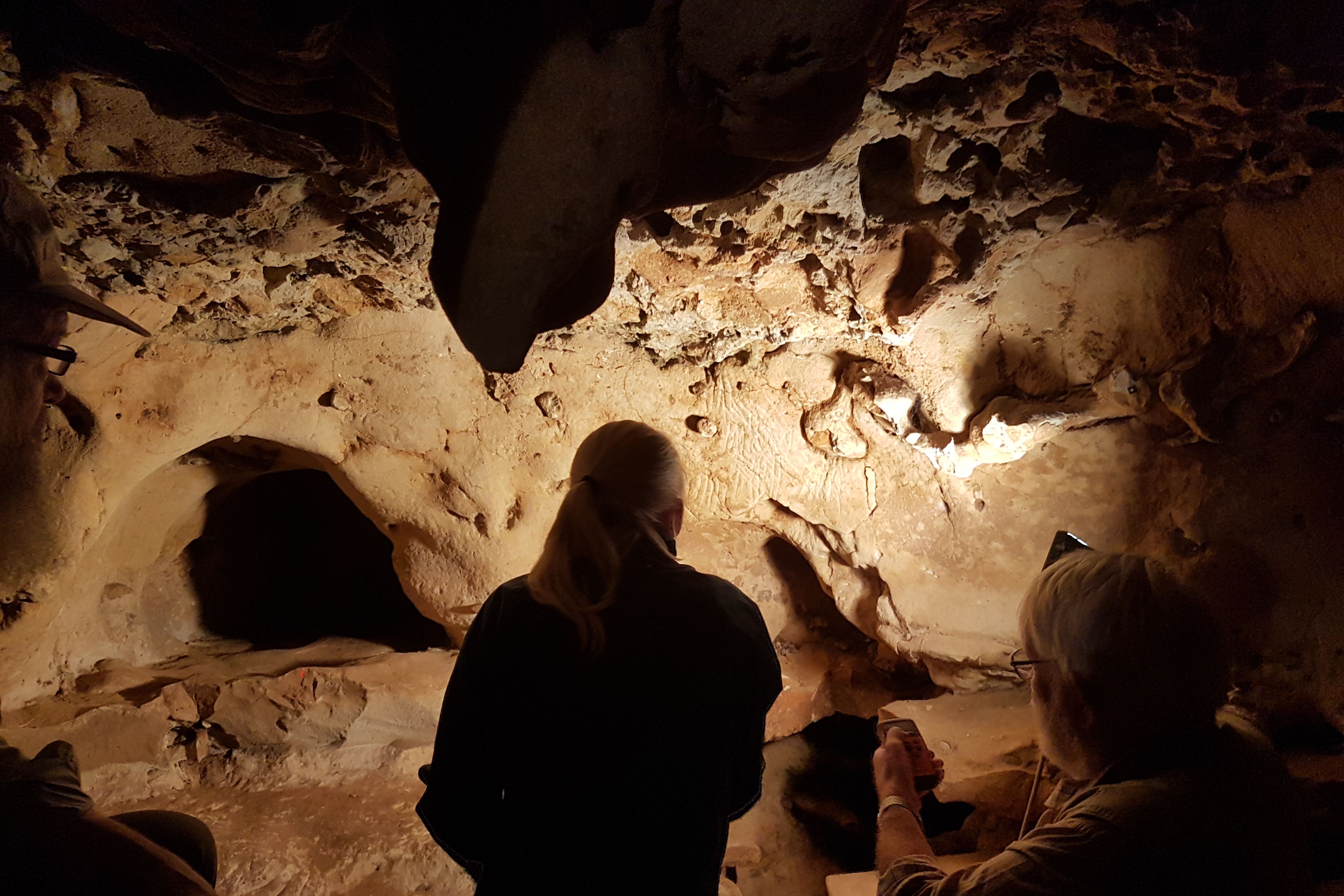57,000-year-old Neanderthal wall art uncovered in France
The finger markings are organised and intentional and thought to be the oldest known engravings by Neanderthals.

Your support helps us to tell the story
From reproductive rights to climate change to Big Tech, The Independent is on the ground when the story is developing. Whether it's investigating the financials of Elon Musk's pro-Trump PAC or producing our latest documentary, 'The A Word', which shines a light on the American women fighting for reproductive rights, we know how important it is to parse out the facts from the messaging.
At such a critical moment in US history, we need reporters on the ground. Your donation allows us to keep sending journalists to speak to both sides of the story.
The Independent is trusted by Americans across the entire political spectrum. And unlike many other quality news outlets, we choose not to lock Americans out of our reporting and analysis with paywalls. We believe quality journalism should be available to everyone, paid for by those who can afford it.
Your support makes all the difference.Finger markings discovered inside a cave in France are “organised and intentional” and were likely made by Neanderthals more than 57,000 years ago, scientists have said.
Thought to be the oldest known engravings made by the extinct human relative, the marks were found on La Roche-Cotard cave walls in the Centre-Val de Loire region of northern France.
The researchers said their findings, published in the journal Plos One, add to evidence that Neanderthals were “complex and diverse as those of our own ancestors”.
The authors wrote: “Fifteen years after the resumption of excavations at the La Roche-Cotard site, the engravings have been dated to over 57,000 years ago… making this the oldest decorated cave in France, if not Europe.”
In terms of culture, we now have a better understanding of the plurality of Neanderthal activities
For the study, Jean-Claude Marquet, of the University of Tours in France, and his colleagues analysed the wall markings, also known as finger flutings.
The team created 3D models of the engravings and compared them with known human markings.
The researchers concluded that the wall markings were deliberate, based on their shape, spacing, and arrangement.
The types of markings found were circular, dotted, triangular and wavy.
The organised and intentional shapes may be symbolic creations, according to the researchers, although they added: “It is not possible for us to establish if they represent symbolic thinking.”
“Nevertheless,” the authors wrote, “Our understanding of the relationship between Neanderthals and the symbolic and even aesthetic realms has undergone a significant transformation over the past two decades and the traces preserved in the cave of La Roche-Cotard make a new and very important contribution to our knowledge of Neanderthal behaviour.”
The team also dated cave sediments and concluded that La Roche-Cotard cave became closed off by infilling sediment around 57,000 years ago, long before modern humans became established in the region.
The markings, along with stone tools found in the cave, provide “strong evidence that these engravings are the work of Neanderthals”, the researchers said.
The authors said the wall engravings pay “tribute to this lost humanity, whose role in the biological and cultural evolution of humans is undergoing profound revision”.
They wrote: “In terms of culture, we now have a better understanding of the plurality of Neanderthal activities, attesting to elaborate and organised social behaviours that show no obvious differences from those of their contemporaries, anatomically modern humans, south of the Mediterranean.”